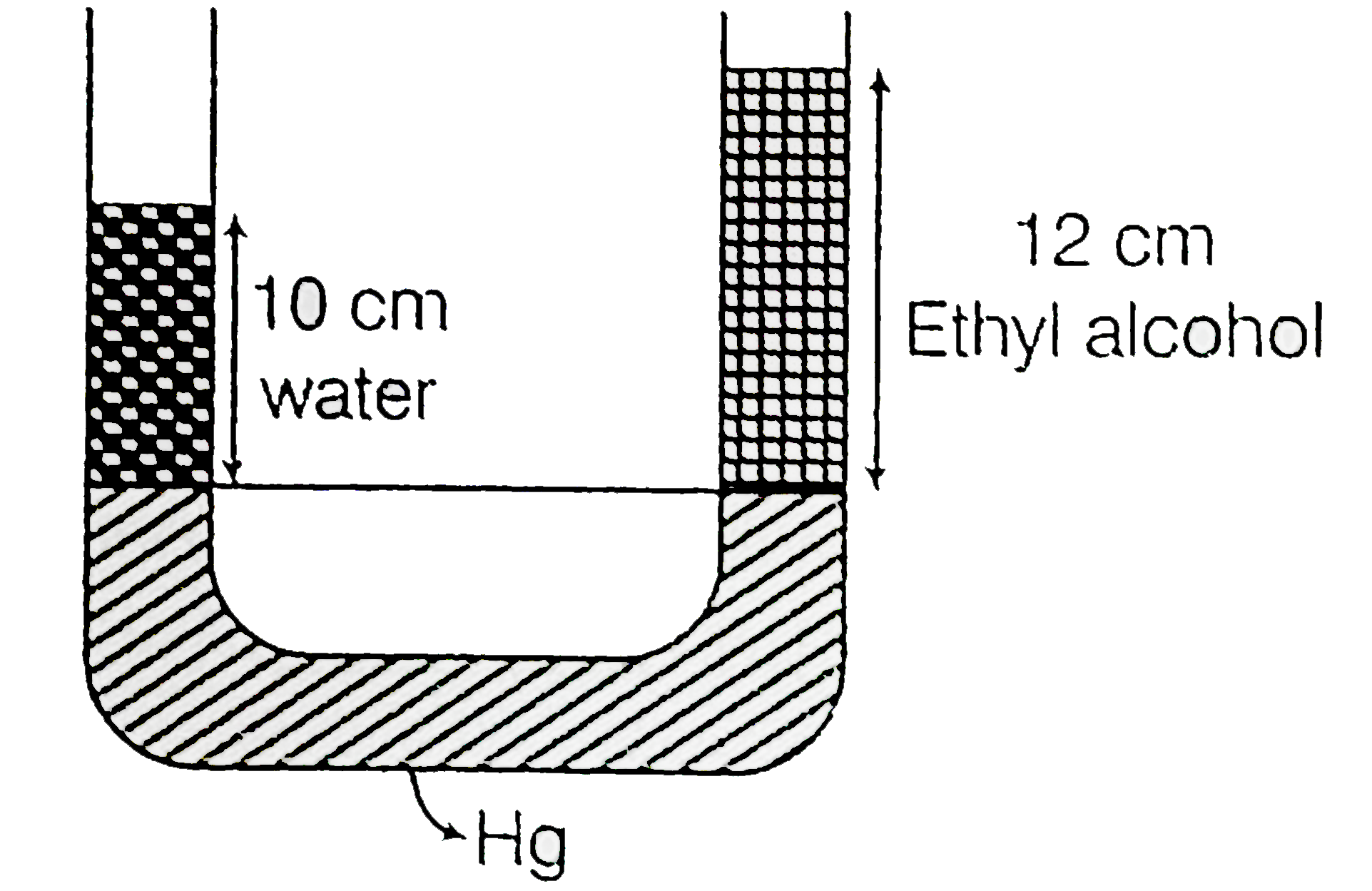What will be the nature of the solution when ethyl alcohol and water are mixed ?
To determine the nature of the solution when ethyl alcohol and water are mixed, we can follow these steps:
Step 1: Identify the Components
- Solute: Ethyl alcohol (C2H5OH)
- Solvent: Water (H2O)
Step 2: Understand the Interaction
- When ethyl alcohol is mixed with water, the interactions between the molecules of ethyl alcohol and water (A and B) are weaker compared to the interactions between the molecules of water (A) and the molecules of ethyl alcohol (B) themselves.
Step 3: Analyze Enthalpy Change
- The mixing process involves a change in enthalpy (ΔH). Since the interactions between the components are weaker, ΔH is not equal to zero. This indicates that the process is endothermic, meaning it absorbs heat during the mixing.
Step 4: Consider Volume Change
- The change in volume (ΔV) during the mixing process is also significant. The volume of the solution may change, indicating that the mixing is not ideal.
Step 5: Apply Raoult's Law
- According to Raoult's Law, the total vapor pressure of the solution is the sum of the vapor pressures of the individual components, adjusted by their mole fractions. However, in this case, the total vapor pressure of the solution will be greater than that of the individual components.
Step 6: Determine Deviations from Raoult's Law
- Since the total vapor pressure is greater than expected, this indicates a positive deviation from Raoult's Law. This means that the solution does not behave ideally and that the interactions between the solute and solvent are weaker than those in the pure components.
Conclusion
- The nature of the solution when ethyl alcohol and water are mixed is that it shows positive deviation from Raoult's Law, indicating that the solution is non-ideal.
---
- Solute: Ethyl alcohol (C2H5OH)
- Solvent: Water (H2O)
- When ethyl alcohol is mixed with water, the interactions between the molecules of ethyl alcohol and water (A and B) are weaker compared to the interactions between the molecules of water (A) and the molecules of ethyl alcohol (B) themselves.
- The mixing process involves a change in enthalpy (ΔH). Since the interactions between the components are weaker, ΔH is not equal to zero. This indicates that the process is endothermic, meaning it absorbs heat during the mixing.
- The change in volume (ΔV) during the mixing process is also significant. The volume of the solution may change, indicating that the mixing is not ideal.
- According to Raoult's Law, the total vapor pressure of the solution is the sum of the vapor pressures of the individual components, adjusted by their mole fractions. However, in this case, the total vapor pressure of the solution will be greater than that of the individual components.
- Since the total vapor pressure is greater than expected, this indicates a positive deviation from Raoult's Law. This means that the solution does not behave ideally and that the interactions between the solute and solvent are weaker than those in the pure components.
- The nature of the solution when ethyl alcohol and water are mixed is that it shows positive deviation from Raoult's Law, indicating that the solution is non-ideal.
Topper's Solved these Questions
- SOLUTIONSBOOK - ICSECHAPTER - SOLUTIONSEXERCISE - EXERCISE (PART-II Descriptive Questions) (SHORT ANSWER QUESTIONS)
34 Videos
- SOLUTIONSBOOK - ICSECHAPTER - SOLUTIONSEXERCISE - EXERCISE (PART-II Descriptive Questions) (LONG ANSWER QUESTIONS)
21 Videos
- SOLUTIONSBOOK - ICSECHAPTER - SOLUTIONSEXERCISE - EXERCISE (PART-I Objective Questions) (Choose the correct alternative)
35 Videos
- SOLID STATEBOOK - ICSECHAPTER - SOLID STATEEXERCISE - ISC EXAMINATION QUESTIONS PART-I (Numerical Problems)
6 Videos
- SOME IMPORTANT ORGANIC NAME REACTIONS BOOK - ICSECHAPTER - SOME IMPORTANT ORGANIC NAME REACTIONS EXERCISE - Questions
278 Videos
Similar Questions
Knowledge Check
Ether is obtained from ethyl alcohol
Ain presence of H2SO4 at 413KBin presence of H2SO4 at 473KCin presence of H2SO4 at 483KDin presence of H2SO4 at 473K
The final product of the oxidation of ethyl alcohol is
View SolutionConversion of Ethyl alcohol to vinly acetate
View SolutionWhat is the molarity of an aqueous solution of ethyl alcohol molar mass =46.0 which contains 50.0 g of alcohol in 500 mL of the solution?
View SolutionConversion of Methyl amine into ethyl alcohol
View SolutionEnzymes that changes glucose to ethyl alcohol is
View SolutionGive reason when 30 mL of ethyl alcohol and 30 mL of water are mixed, the volume of resulting solution is more than 60 mL.
View SolutionThe vapour pressure of ethyl alcohol at 25∘C is 59.2 torr. The vapour pressure of a solution of urea in ethyl alcohol is 51.3 torr. What is the molality of the solution?
View Solution

